MUSIC AND THE POWER OF SOUND
The Influence of Tuning and Interval on Consciousness
Alain Danilou

Inner Traditions
Rochester, Vermont
To Max dOllone and ivendranth Basu
TABLES AND FIGURES
FOREWORD
The musicological work of Alain Danilou must be seen in a particular light since he happens to be by nature a musician. This is by no means common. How many musicologists, even the most famous, are not musicians! How many, indeed, are antimusical to the point of embodying the very negation of what constitutes a musician!
This is why I was wondering how Danilou could be a musicologist, since he is a philosopher, a gifted linguist, a writer, a delightful painter, a composer, and an artist. This last quality is so obvious in him that it includes all the others. The sum of so many distinguished achievements reflects nothing more nor less than an equal sum of hard work.
Though it might seem irrelevant, I should like to compare the construction of an inner being, worked out with patience, method, and application during a long and generous life, to the cross-section of an architectural design, which perhaps reveals a difficulty solved through an ingenious device. Even if such a solution appears an inspiration or a gift of grace, it remains linked to a constant life of study.
All this being said, there is nothing surprising in the fact that Danilous approach should be completely his own, following completely unconventional lineslines that are new and unexplored, and that may appear inaccessible or even hostile. There is no question of shortcuts nor of the rediscovery of ancient roads long abandoned.
Danilous inquiry is typically scientific. It cannot be seen as a continuation of previous work. It is strictly current and completely modern, and in many cases its conclusions appear definitive. They are presented here in one short work of a moral value worthy of Leopardi, covering a field that would normally require several inflated volumes from Doctors of Music, in which they would develop the most boring theories.
Danilou attacks the immobility of the West from the perspective of the Far East. From there, it is paradoxically the West that appears to be a static and contemplative world, one that has been asleep for millenia. The substance of his theories rests on an experience, deeper than one might imagine, of the essence of music as it is found in the East. He confronts us with an irrefutable critique of the many artificial deformations of musics original language, showing how the fact of consonance as understood in the ancient world, and as it has been kept alive in Indian music, reveals unexplored possibilities.
Composers of our time would do well to explore the intricate but transparent routes of the labyrinth of sounds, and study attentively the inner implications of this important book.
In the second chapter, Danilous reflections on timbre and the choice of particular instruments are especially valuable; he seems to be the only one to underline the fundamental distinction between musical sounds and sounds that in fact are not musical. This crucial parameter has obvious implications in most aspects of present-day music. We read how harmonics are usually but not always multiples of the fundamental frequency. Instruments such as the violin or accordion produce, together with each note, a large number of harmonics, often louder than the note itself; other instruments such as the flute or the isolated string of a piano possess relatively few audible harmonics. Each sound forms with its own harmonics a complex chord possessing in itself a precise meaning. One often hears stupidities from people incapable of observation; it is with relief that one reads these considerations of luminous clarity about facts we tend to ignore but which represent a sacred and attractive threshold. This is the first marble step of an ascent toward the revelation of a higher world; a magic carpet near which we take off our shoes, ready to enter the sidereal space of liberated sound.
Sylvano Bussotti
Rome, January 1989
EDITORS NOTE
Music and the Power of Sound was first published under the title Introduction to the Study of Musical Scales in London in 1943. The authors own French translation was published in France in 1959 under the title Trait de musicologie compare and has recently been reprinted. Despite the publication in India in 1969 of an unauthorized facsimile of the original edition, however, the book has been virtually unobtainable in English in the West since the 1943 edition went out of print. On a trip to India in 1987, I discovered the Indian edition of the book and devoured it at one sitting on a train journey from Delhi to Bombay. Here, it seemed to me, was someone who was answering with clarity and precision many of the questions that had been preoccupying me concerning the nature of music and its power to evoke in us feelings and images. It was an approach both universal and specific, one that made sense of the cultural differences between musical forms as well as the underlying threads that link them all.
Through the International Institute for Comparative Musicology in Berlin, of which Alain Danilou was the founder, I contacted him at his home in Italy. He was delighted when I proposed republishing this valuable work and making it once again readily available in English.
This edition has been fully revised and rendered into more modern English, with the approval and cooperation of the author. It was perhaps part of the charm of the original edition that it was written in English by a Frenchman living in India, but I felt that the language could be modernized without loss and that the resultant improvement in clarity would be worth the effort. My understanding of musical structures and my ability to sing in tune have both improved in the process.
Daniel Rivers-Moore
August 1994

La novit del suono e il grande lume
di lor cagion maccesero un diso
mai non sentito di cotanto acume....
Tu non si in terra s come tu credi;...
Qui veggion lalte creature lorma
delletterno valore, il quale fine,
al quale fatta la toccata norma.
(Dante, Paradiso 1.82-108)
The newness of the sound,
And that great light, inflamed me with desire,
Keener than eer was felt, to know their cause....
Thou art not on the earth as thou believest;...
(Then said Beatrice) Here
The higher creatures see the printed steps
Of that eternal power, which is the end
For which the order of things is made.
(Carys translation, adapted)
 Chapter One
Chapter One
METAPHYSICAL CORRESPONDENCES
All music is based on the relations between sounds, and a careful study of the numbers by which these relations are ruled brings us immediately into the almost forgotten science of numerical symbolism. Numbers correspond to abstract principles, and their application to physical reality follows absolute and inescapable laws. In musical experience we are brought into direct contact with these principles; the connection between physical reality and metaphysical principles can be felt in music as nowhere else. Music was therefore justly considered by the ancients as the key to all sciences and artsthe link between metaphysics and physics through which the universal laws and their multiple applications could be understood.
Modern civilization has tended to reject the ways of thinking and scientific conceptions that formed its foundations. Western people have largely broken away from the social and intellectual regulations that restricted their freedom, and in doing so they have abandoned the age-old order and traditional knowledge that had been the basis of their development. This is why sciences and arts originally understood as diverse applications of common principles have been reduced to a condition of fragmentary experiments isolated from one another.
Next page
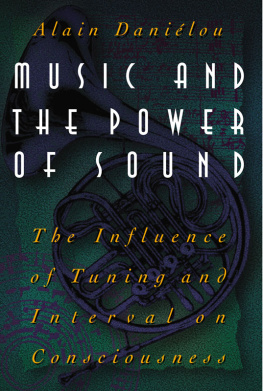
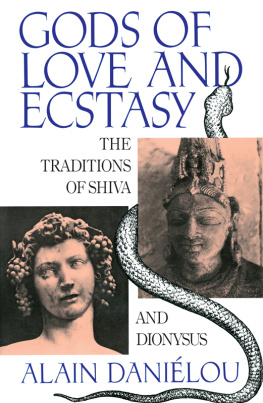

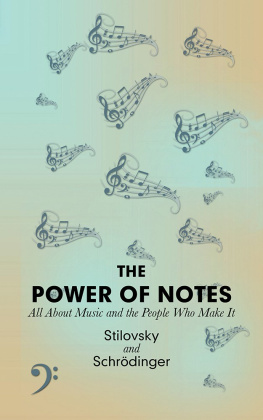
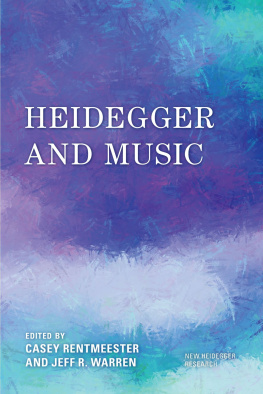
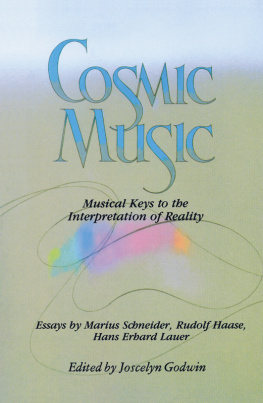
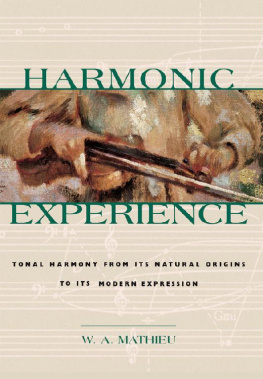
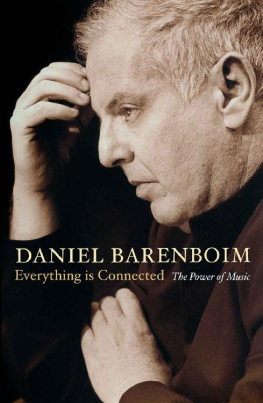




 Chapter One
Chapter One